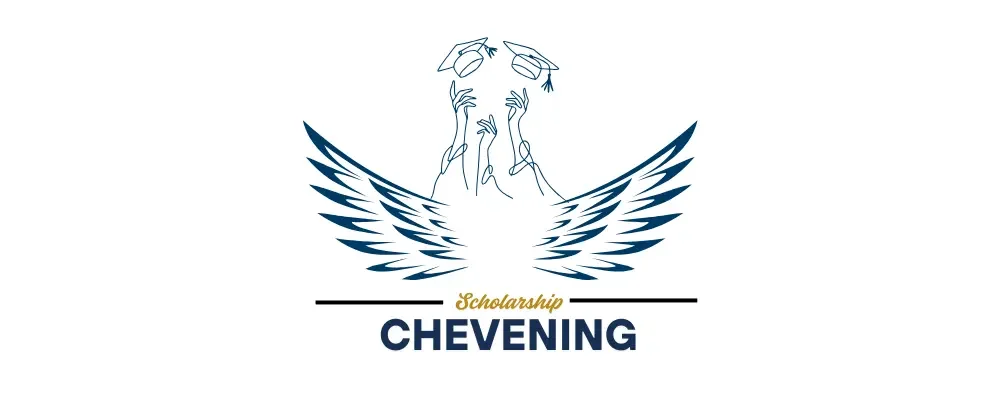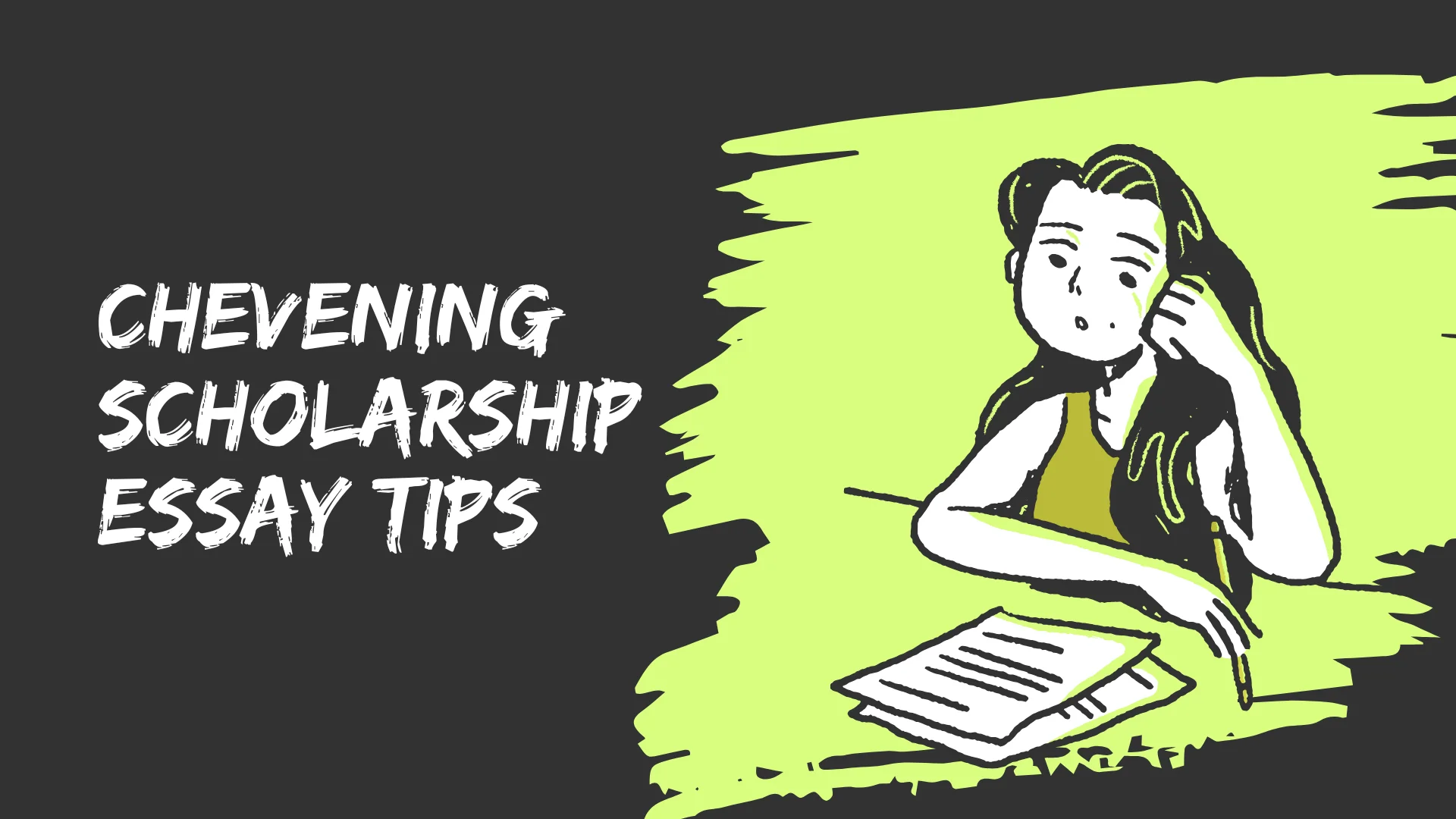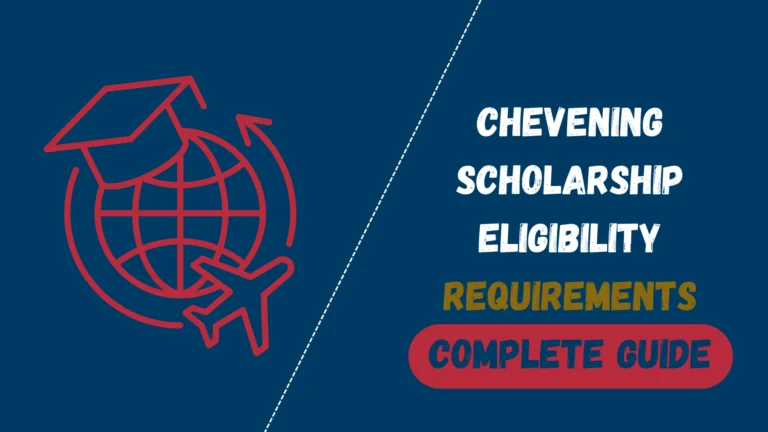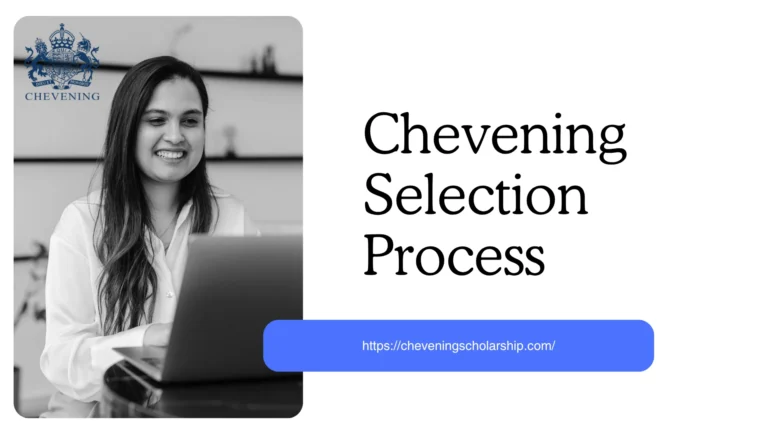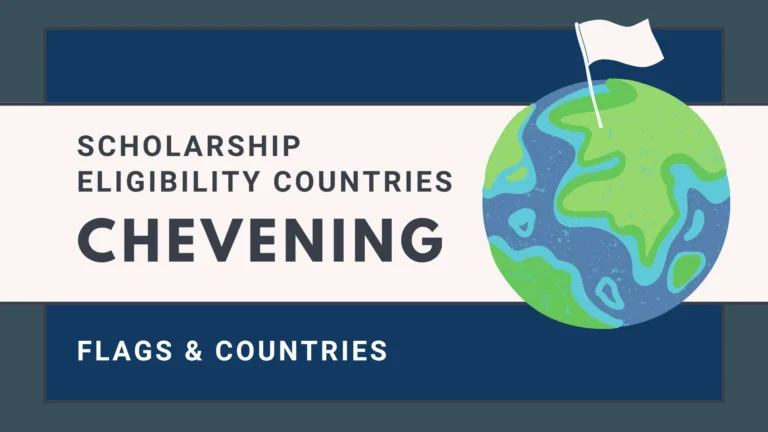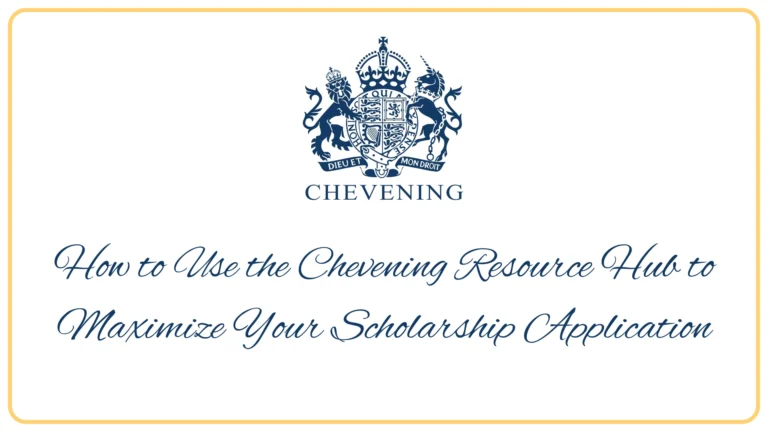Chevening Scholarship Essay Tips: How to Write Essays That Actually Win
Chevening Scholarship Essay Tips – Let me tell you about the worst mistake I see in Chevening essays.
It’s not bad grammar. It’s not exceeding the word limit. It’s something far more fundamental: People write essays that could belong to literally anyone else.
You know the type. “I am a passionate leader committed to making a difference…” Yawn. The independent reader assessing your application has probably seen that exact sentence seventeen times already today.
Here’s the brutal truth: Your Chevening scholarship essays are the only thing between you and a fully-funded master’s degree in the UK. No interview saves you if your essays don’t make the cut. No stellar GPA compensates for boring writing.
But here’s the good news—and why you’re reading this: Writing exceptional Chevening essays isn’t about being a literary genius. It’s about understanding what the reviewers actually want to see and delivering it with authenticity and precision.
I’ve broken down everything you need to know about how to write Chevening essays that don’t just get read—they get remembered.
Why Chevening Essay Writing Tips Actually Matter
Before we dive into the mechanics, let’s talk about stakes.
Around 70,000 people apply for Chevening each year. Roughly 1,500 win. Your essays are the first—and sometimes only—impression you make. There’s no interview to save a weak application. No recommendation letter that overrides mediocre writing.
The Chevening essay writing tips you follow literally determine whether you’re studying at Oxford next year or watching from the sidelines.
And unlike some scholarships where selection feels mysterious, Chevening is remarkably transparent about what they want. The problem? Most applicants either don’t understand the brief or don’t know how to execute it effectively.
That changes today.

Understanding the Chevening Scholarship Essay Questions
First things first: What are you actually writing about?
The Chevening scholarship essay questions for 2025 remain consistent with previous years, focusing on four core areas:
- Leadership and Influence (100-500 words)
- Networking (100-500 words)
- Course Choice and Career Plan (minimum 100 words, maximum 500 words)
- Study in the UK (minimum 50 words, maximum 100 words)
Notice something? The word limits are generous ranges, not fixed numbers. This flexibility is both a blessing and a curse—you need to know when to expand and when to compress.
Each essay tests different competencies, but they’re all looking for the same underlying qualities: specificity, impact, and authenticity.
The Golden Rule of Chevening Essay Writing
Before we get tactical, internalize this:
Show, don’t tell.
Saying “I am a natural leader” means nothing. Describing how you mobilized a community of 500 people to implement a sustainable water project? That shows leadership.
Claiming “I have strong networking skills” is empty. Explaining how you built a partnership between your NGO and the Ministry of Health that resulted in policy change? That demonstrates networking.
This principle underpins every Chevening scholarship essay tip that follows.
How to Write Chevening Essays: The Essay-by-Essay Breakdown
Part 1: Crushing the Leadership Essay
The Chevening leadership essay tips start with understanding what leadership actually means to Chevening.
They’re not looking for job titles. They don’t care if you’re a CEO or an intern. What matters is influence—your ability to inspire, mobilize, and create change.
What Strong Leadership Essays Include:
Concrete Examples Don’t list leadership positions. Tell stories of specific challenges you navigated.
Weak: “As project manager, I led a team of ten people.”
Strong: “When our youth empowerment project lost 60% of its funding mid-cycle, I had to convince ten volunteers to continue working without stipends. I did this by restructuring our timeline, securing smaller grants from local businesses, and helping team members see how this project could become a portfolio piece for their careers.”
Measurable Impact Numbers make your achievements tangible.
Instead of: “I improved community health outcomes” Try: “The mobile clinic initiative I spearheaded provided healthcare to 3,200 rural residents in six months, reducing preventable disease cases by 34% according to district health records.”
Different Types of Leadership Chevening values diverse leadership styles. You might demonstrate:
- Leading from behind (empowering others)
- Leading through crisis
- Leading innovation or change
- Leading across cultures or sectors
- Leading without formal authority
The STAR Method for Leadership Essays
The Chevening scholarship STAR method is your structural friend:
Situation: Set the context (1-2 sentences) Task: Explain the challenge or goal (1-2 sentences)
Action: Detail what YOU did—be specific (3-4 sentences) Result: Share the outcome with evidence (1-2 sentences)
Here’s how it looks in practice:
“In 2023, our regional education NGO faced a crisis when our largest donor withdrew, threatening programs serving 40 schools (Situation). As deputy director, I needed to secure alternative funding within three months to prevent program collapse (Task). I created a diversified fundraising strategy: pitched to five local corporations using data from our impact reports, organized a community fundraising campaign that went viral on social media, and negotiated a partnership with the Ministry of Education for co-funding. I personally drafted all proposals, presented at board meetings, and trained our team in storytelling for fundraising (Action). Within ten weeks, we’d secured $85,000 from multiple sources—enough to sustain operations and actually expand to three additional schools (Result).”
See the difference? This is specific, demonstrates genuine leadership qualities, and proves impact.
Part 2: Nailing the Networking Essay
The Chevening networking essay tips revolve around one often-misunderstood concept: Networking isn’t about collecting business cards.
Chevening defines networking as “building and maintaining meaningful relationships that support your goals and allow you to help others.” It’s reciprocal, strategic, and long-term.
Common Networking Essay Mistakes:
❌ Listing famous people you met once ❌ Describing networking as transactional (“I meet people to advance my career”) ❌ Confusing social media followers with real relationships ❌ Focusing on what you’ll GET rather than what you’ll CONTRIBUTE
What Strong Networking Essays Actually Cover:
Past Networking Success Describe a specific relationship or network you’ve built and its tangible outcomes.
Example approach: “Through my involvement in the Young Professionals Climate Forum, I built relationships with 25 environmental policy advocates across Southeast Asia. When I needed technical expertise for my municipality’s waste management proposal, I reached out to contacts in Thailand and Indonesia who’d implemented similar programs. Their insights helped us avoid costly mistakes, and our proposal was approved with 30% higher budget allocation than initially requested.”
Your Networking Philosophy Explain HOW you approach relationship building.
Do you:
- Focus on depth over breadth?
- Build cross-sector networks?
- Maintain relationships through regular check-ins?
- Create value before asking for help?
Future UK Networking Plans Be specific about who you’ll connect with and why.
Vague: “I’ll network with professors and other Chevening scholars.”
Specific: “I plan to attend the annual UK Climate Policy Summit where I can connect with researchers from the Grantham Institute working on carbon pricing—directly relevant to my career goal of advising my government on climate finance. I’ll also join the LSE Emerging Markets Development Network to build relationships with alumni working in multilateral development banks, as these connections will be crucial for my long-term goal of shaping development policy in my region.”
The Three-Tier Networking Structure
Organize your Chevening networking essay around three relationship levels:
| Network Tier | Who | Purpose | Example |
|---|---|---|---|
| Strategic | Mentors, industry leaders | Guidance and opportunity access | Former minister who advises your career direction |
| Peer | Colleagues, fellow professionals | Collaboration and mutual support | Project partners you work with regularly |
| Emerging | Students, junior professionals | Knowledge sharing and future collaboration | Young professionals you mentor who may become future partners |
Showing you maintain networks at all three levels demonstrates sophistication.
Part 3: Crafting Your Career Plan Essay
The Chevening career plan essay tips are simple on paper but tough in execution: Connect your past, present, and future into one coherent narrative.
Your career plan essay should answer three questions seamlessly:
- Where have you been? (Your relevant experience)
- Why these specific UK courses? (The gap you need to fill)
- Where are you going? (Your concrete five-year plan)
The Fatal Career Plan Mistakes:
Being Too Vague “I want to improve education in my country” tells reviewers nothing.
“I will return to my role at the Ministry of Education where I’ll apply behavioral economics insights from my MSc to redesign our national teacher incentive program, aiming to reduce teacher turnover in rural areas by 25% within three years” is a plan.
Choosing Prestigious Over Relevant Don’t pick Oxford just because it’s Oxford. Pick the course and university that genuinely align with your career gap.
If you’re a climate policy analyst, explain why the specific modules in Environmental Technology at Imperial matter for your work. Name professors whose research aligns with your interests.
Forgetting the UK Requirement Your plan MUST involve returning home or benefiting your home country. Chevening isn’t a immigration route—it’s a leadership development program.
How to Write Chevening Career Plan Essay: The Formula
Paragraph 1: Your Journey So Far Summarize your relevant professional experience in 3-4 sentences. Focus on progression and growing impact.
Paragraph 2: The Gap Identify what’s missing in your skillset or knowledge that prevents you from achieving your next-level goals.
Paragraph 3: Why These Specific Courses Name your three chosen universities and explain what each offers. Be specific: mention modules, research centers, professors, practicum opportunities.
Paragraph 4: Your 3-5 Year Plan Detail concrete steps you’ll take post-scholarship. Include:
- Immediate return (where you’ll work, what role)
- Medium-term goals (what you’ll achieve in years 2-3)
- Long-term impact (what change you’ll create in years 4-5)
Paragraph 5: The Bigger Picture Connect your individual plan to broader sector or national development goals.
Real Example of Good Career Plan Structure:
“For the past five years, I’ve worked in agricultural finance, progressing from credit officer to regional manager at [Bank Name], where I’ve disbursed over $2M in loans to 800 smallholder farmers. While I understand rural credit needs, I lack expertise in climate risk assessment—a critical gap as droughts increasingly threaten farmer repayment capacity.
My MSc in Climate Change and Development will fill this gap. At Sussex, I’ll take ‘Climate Risk in Financial Decision Making’ and work with Professor [Name]’s research group on agricultural adaptation. At Edinburgh, the ‘Carbon Finance and Climate Policy’ module aligns with my interest in blended finance solutions. King’s offers a practicum with agricultural development organizations where I can apply learning in real contexts.
Upon return, I’ll rejoin [Bank] as Senior Product Developer, where I’m already promised a role creating climate-indexed insurance products for farmers. By year three, I aim to have piloted this product with 1,000 farmers in drought-prone regions. By year five, I’ll advocate for policy requiring all agricultural banks to integrate climate risk assessment, leveraging my UK network of climate finance experts to support this work. This contributes directly to my country’s National Adaptation Plan goals…”
Notice: Specific, connected, realistic, impactful.
Part 4: The Study in UK Essay (The Often-Neglected One)
This Chevening course choice essay is short (50-100 words) but important.
Don’t waste it on generic statements like “The UK has world-class education.” Every applicant knows that.
Instead, focus on:
- Cultural or historical connections between UK and your country
- Specific UK strengths in your field
- How studying in UK (vs. elsewhere) uniquely benefits your goals
- Personal or professional UK connections
Example: “The UK’s pioneering work in renewable energy policy—from feed-in tariffs to offshore wind scaling—offers lessons directly transferable to my country’s energy transition goals. Additionally, studying in the UK allows me to analyze firsthand how British-style parliamentary systems address climate legislation, relevant as my country shares this governance model. The UK’s position as a global financial hub also provides unmatched access to climate finance expertise.”
See? Specific to YOUR situation and goals, not generic praise.

Universal Chevening Essay Structure Tips
Now let’s talk about Chevening essay structure principles that apply across all four essays.
The Introduction That Hooks
Your opening sentence determines whether the reviewer reads attentively or skims.
Weak openings:
- “I am writing to express my interest…”
- “Leadership is important because…”
- “My name is [X] and I am from [Y]…”
Strong openings:
- Start with a specific moment: “The day I convinced 40 factory workers to join our labor rights campaign, I learned that leadership isn’t about authority—it’s about trust.”
- Lead with impact: “Last year, the policy brief I co-authored influenced my country’s first disability inclusion law, affecting 2 million citizens.”
- Pose a compelling question: “How do you convince rural communities to adopt solar power when they’ve lived without reliable electricity for decades?”
The Chevening Essay Word Limit Strategy
Chevening essay word limit management is an art.
For the 100-500 word essays:
- 400-450 words is the sweet spot for most essays
- Go longer (480-500) only if you have genuinely complex experiences to explain
- Go shorter (300-350) for simpler, more focused narratives
For the 50-100 word UK essay:
- Aim for 80-95 words
- Every sentence must earn its place
Don’t just fill space. Dense, punchy writing beats fluffy verbose writing every time.
Ensuring Coherence and Flow
Chevening scholarship essay tips on coherence boil down to one thing: Each sentence should naturally lead to the next.
Use transition phrases strategically:
- “Building on this experience…”
- “This challenge taught me…”
- “Consequently, I sought opportunities to…”
- “This explains why I’m drawn to…”
But don’t overuse them. Sometimes, the logical connection is obvious and transitions become clunky.
Read your essay aloud. If you stumble anywhere or something feels abrupt, that’s where flow breaks down.
The Chevening Essay Writing Mistakes That Kill Applications
Let’s talk about Chevening scholarship essay mistakes that torpedo otherwise strong candidates.
Mistake #1: Writing Generic Essays
If your essay could work for any scholarship by changing the name “Chevening” to “Fulbright,” it’s too generic.
Fix: Root everything in Chevening’s specific values—leadership, networking, UK study, and home country impact.
Mistake #2: Overstating Your Role
Claiming you “single-handedly revolutionized” anything raises red flags. Reviewers know leadership is collaborative.
Fix: Use “I led a team that…” or “I coordinated efforts that…” Show your specific contributions within larger contexts.
Mistake #3: Poor Grammar and Typos
A few typos won’t destroy you, but consistent errors suggest carelessness or weak English—both problematic for a UK scholarship.
Fix: Use the Chevening essay proofreading checklist at the end of this post. Get at least three people to review your essays.
Mistake #4: Copying from Chevening Essay Examples
Yes, looking at Chevening scholarship essay examples is smart. Copying their structure, phrasing, or stories? Disaster.
Reviewers spot recycled essays immediately. Plus, what worked for someone else might not fit your experience.
Fix: Use examples for inspiration on structure and tone only. Your content must be 100% original.
Mistake #5: Ignoring the Brief
If the question asks about leadership and you write about academic achievements, you’ve missed the point entirely.
Fix: Before writing each essay, write out the question in your own words to ensure you understand what’s being asked.
Mistake #6: Weak Evidence
“I am a good networker” without evidence is just opinion.
Fix: Every claim needs proof. Replace adjectives (good, strong, excellent) with specific examples and outcomes.
Mistake #7: No Clear Thread
Your four essays should tell one cohesive story about who you are and where you’re going.
Fix: Before submitting, read all four essays in sequence. Do they complement each other? Do they paint a complete picture?
The Chevening Essay Writing Process: From Blank Page to Submission
Let’s talk about Chevening essay planning—the process that precedes writing.
Week 1-2: Brainstorming and Evidence Gathering
Step 1: List all your leadership experiences
- Professional roles
- Volunteer work
- Community initiatives
- Crisis moments where you stepped up
Step 2: Map your network
- Who are your key professional relationships?
- What tangible outcomes have these relationships produced?
- How do you maintain these networks?
Step 3: Clarify your career trajectory
- What’s your current role and its impact?
- What skills/knowledge gaps prevent your next step?
- What are your concrete 5-year goals?
Step 4: Research your universities thoroughly
- Read course syllabi for each program
- Identify specific modules that address your gaps
- Find professors whose research aligns with your interests
- Research practicum/networking opportunities
Week 3: First Draft—Just Write
Don’t edit as you write. Get everything down first.
Use the Chevening essay outline structure:
- Hook opening
- Main examples with STAR structure
- Clear connection to your goals
- Strong closing that reinforces your main message
Week 4: The Chevening Essay Rewriting Process
This is where good essays become great essays.
First edit: Cut ruthlessly
- Remove every redundant word
- Eliminate weak verbs (is, was, has been)
- Replace passive voice with active voice
- Delete generic statements
Second edit: Strengthen evidence
- Add specific numbers, names, outcomes
- Replace vague descriptions with concrete details
- Ensure every example clearly demonstrates the essay’s theme
Third edit: Improve flow
- Check transitions between paragraphs
- Vary sentence structure
- Ensure logical progression
Week 5: Feedback and Final Polish
Get Chevening scholarship essay feedback from:
Three types of readers:
- Someone who knows Chevening (alumni or education counselors)
- They’ll assess alignment with Chevening values
- Someone in your field (colleague or mentor)
- They’ll verify your technical claims and career plan realism
- Someone who writes well (editor friend)
- They’ll catch grammar, flow, and clarity issues
Don’t ask for feedback from more than 3-4 people. Too many opinions creates confusion.
Final Proofread Checklist
Use this Chevening essay editing tips checklist before submission:
- ✓ Read each essay backward (sentence by sentence) to catch typos
- ✓ Check that you’re within word limits for ALL essays
- ✓ Verify that no two essays tell the exact same story
- ✓ Confirm all university names and course titles are correct
- ✓ Remove any placeholder text like [INSERT EXAMPLE]
- ✓ Check for consistent tense (usually past for examples, future for plans)
- ✓ Verify that you’ve answered the actual question asked
- ✓ Ensure you’ve never used the word “passionate” (it’s overused)
- ✓ Read aloud to catch awkward phrasing
Advanced Chevening Essay Writing Tips from Winners
Time for insider Chevening scholarship essay tips from winners—things that distinguish exceptional essays from merely good ones.
Tip #1: Demonstrate Self-Awareness
The strongest essays show you’ve reflected on your experiences, not just listed them.
Instead of: “I successfully led this project.” Try: “Leading this project taught me that my natural inclination toward consensus-building, while valuable, can slow decision-making in crisis situations—a tension I’m still learning to navigate.”
Tip #2: Show Progression
Your leadership essay should demonstrate how you’ve grown as a leader over time.
Start with an earlier example showing emerging leadership, then contrast with a recent example showing maturity and sophistication.
Tip #3: Connect the Dots
Explicitly link your essays together.
In your networking essay, reference how networking enabled the leadership example you mentioned. In your career essay, explain how your course choice will deepen the skills you demonstrated in your leadership experience.
Tip #4: Be Specific About the UK
Don’t just say “I’ll network with Chevening scholars.” Say “I’ll particularly seek to connect with Chevening alumni working in agricultural development across Sub-Saharan Africa, as their experience navigating similar challenges will be invaluable as I scale our climate-smart farming initiative.”
Tip #5: Quantify Everything Possible
Replace:
- “Many people” with “47 participants”
- “Significant increase” with “34% growth”
- “Large budget” with “$250,000”
- “Several organizations” with “eight NGOs across three countries”
Numbers make your impact tangible and memorable.
Tip #6: Address Potential Concerns Proactively
If you’re worried reviewers might question something—like a career gap, change in direction, or unusual course choice—address it briefly and confidently.
“While my background is in engineering, my five years managing tech implementation in rural clinics revealed that the real barriers to healthcare access are policy and financing—hence my shift to health economics.”
Tip #7: End Strong
Your closing sentences should reinforce your main message and stick with the reader.
Weak closing: “I believe I am a good fit for Chevening.” Strong closing: “Returning from the UK with climate finance expertise and a network of international development professionals, I’ll be positioned to transform how my country funds its adaptation priorities—turning vulnerability into resilience for communities most affected by climate change.”
Chevening Essay Tips 2025: What’s New and What Matters
For those applying to Chevening scholarship 2025, here’s what to know:
Emerging Themes in Successful Essays
Based on recent scholarship trends:
Sustainability and Climate Action If your work touches environment, climate, or sustainability, emphasize this. It’s a priority area.
Digital Transformation Essays that show leadership in technology adoption or digital solutions for development challenges resonate strongly.
Post-Pandemic Leadership Demonstrating how you navigated COVID-era challenges or innovated despite constraints shows relevant leadership qualities.
Equity and Inclusion Leadership that promotes diversity, gender equality, disability inclusion, or marginalized community empowerment aligns with UK values.
What Hasn’t Changed
Despite yearly trends, these fundamentals remain constant:
- Specificity beats generality
- Impact matters more than credentials
- Authenticity trumps polish
- Clear plans beat vague aspirations
- Your essays must form one coherent narrative
The Controversial Take: Should You Use a Chevening Essay Writing Service?
Let’s address Chevening essay writing service directly, because you’re wondering about it.
The honest answer: Using professional editors to review and improve your essays? Fine. Paying someone to write your essays? That’s academic dishonesty and, if discovered, ends your scholarship hopes.
Chevening knows what genuine voice sounds like versus ghost-written content. Your interview (if you get one) will expose essays you didn’t truly write.
Better alternatives:
- University writing centers – Many offer free essay review
- Chevening alumni – Some volunteer to review applications
- Education counselors – Can provide guidance on structure
- Writing workshops – Learn skills to improve your own writing
Your essays should sound like YOU—because eventually, you’ll need to discuss them in person.
Handling Chevening Scholarship Essay Plagiarism Concerns
A serious note on Chevening scholarship essay plagiarism:
Chevening runs all essays through plagiarism detection software. If you:
- Copy phrases from sample essays
- Use someone else’s examples as your own
- Recycle essays from other applications verbatim
- Have someone else write your essays
…you’ll be caught and disqualified.
Plagiarism isn’t always intentional. Avoid accidental plagiarism by:
✓ Writing in your own words from the start ✓ Not copy-pasting anything from samples—not even structure ✓ Citing any statistics or data (you can reference in text: “According to World Bank data…”) ✓ Making every story and example genuinely from your experience
Your experiences are unique. Trust them.
Chevening Essay Personal Story: Making Yours Memorable
The best Chevening scholarship personal story elements share these traits:
Vulnerability Don’t only share successes. Sharing how you failed, learned, and grew is powerful.
“My first attempt at community organizing was a disaster. Only five people showed up to an event I’d promoted for weeks. But analyzing what went wrong taught me more about authentic engagement than any success could have.”
Specificity Generic: “I worked with rural communities.” Specific: “In Makeni Village, convincing farmers to test drip irrigation meant first understanding their deep skepticism—three previous NGO projects had failed them.”
Sensory Details Help readers see your experience.
“The community meeting room, packed with 60 women sitting on plastic chairs under a leaking tin roof, fell silent when I asked who’d experienced workplace harassment. Then, slowly, every hand rose.”
Universal Themes Through Specific Stories Your specific experience should illuminate universal leadership challenges—gaining trust, navigating resistance, managing resources, inspiring action.
The Ultimate Chevening Essay Writing Plan: Your Timeline
Here’s your Chevening scholarship essay writing plan with realistic timelines:
8 Weeks Before Deadline
- Brainstorm all experiences and examples
- Research universities and specific courses
- Draft outline for each essay
- Identify 2-3 people who can provide feedback
6 Weeks Before Deadline
- Complete rough first drafts of all four essays
- Don’t worry about word limits or perfection yet
- Focus on getting your stories down
5 Weeks Before Deadline
- Review and identify strongest examples
- Cut weak examples, even if you love them
- Restructure essays using STAR method
- Refine your career plan specificity
4 Weeks Before Deadline
- Edit for clarity, flow, and conciseness
- Check word limits and adjust
- Send to first round of reviewers
- Research any gaps in your university knowledge
3 Weeks Before Deadline
- Incorporate feedback selectively
- Strengthen openings and closings
- Add specific numbers and evidence
- Ensure essays connect to form coherent narrative
2 Weeks Before Deadline
- Send to second round of reviewers
- Focus on grammar and polish
- Verify all factual information
- Check plagiarism using free online tools
1 Week Before Deadline
- Final proofread multiple times
- Read essays aloud to catch errors
- Get one more person to review
- Prepare submission documents
2-3 Days Before Deadline
- Final review in application portal
- Check formatting appears correctly
- Have backup copies of everything
- Submit (don’t wait until last minute!)
Final Chevening Scholarship Essay Tips: The Essentials
Let’s distill everything into core Chevening scholarship essay tips:
1. Be Specific Every vague statement weakens your application. Add names, numbers, places, outcomes.
2. Show Impact Don’t just describe activities—demonstrate change you created.
3. Stay Authentic Write in your voice about your experiences. Authenticity is magnetic.
4. Connect Everything Your four essays should tell one coherent story about your leadership journey and future vision.
5. Plan Realistically Don’t promise to “transform education nationwide.” Outline concrete, achievable steps.
6. Research Thoroughly Know your universities and courses intimately. Generic course descriptions scream “I didn’t do my homework.”
7. Edit Ruthlessly First drafts are always too long and too vague. Cut 20%, then cut another 10%.
8. Get Feedback But remember: It’s YOUR application. Don’t let others rewrite your voice.
9. Proofread Multiple Times Errors undermine your credibility. Read backward, read aloud, use spell check.
10. Submit Early Technical glitches happen. Don’t risk missing the deadline.
Conclusion: Your Chevening Essay Journey Starts Now
Here’s what I want you to remember:
Your Chevening essays aren’t just application requirements—they’re your opportunity to reflect deeply on your journey, clarify your purpose, and articulate your vision for change.
The process of writing them well is valuable regardless of outcome. You’ll emerge with greater clarity about your leadership style, your professional network, and your career direction.
But let’s be real: You want that scholarship.
And now you have what 90% of applicants don’t—a comprehensive understanding of how to write Chevening essays that genuinely stand out.
The difference between applications that make the shortlist and those that don’t usually isn’t credentials. It’s clarity, specificity, and authenticity in the essays.
You have your experiences. You have your vision. Now you have the framework to present them compellingly.
Stop overthinking. Start writing. Your first draft will be rough—everyone’s is. But you can’t edit a blank page.
The scholarship application that could change your life is waiting to be written.
What are you waiting for?
Have you started your Chevening essays? What’s the biggest challenge you’re facing? Drop a comment below—I read and respond to every one, and your question might help others too.
Found this guide helpful? Bookmark it, share it with fellow applicants, and check back as you draft. You’ve got this.
Ready to dive deeper? Download our free Chevening Essay Planning Worksheet [LINK] to organize your ideas before you start writing.
Now close this tab, open a blank document, and write that first sentence. Everything else will follow.
